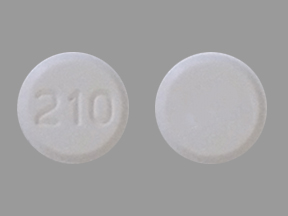Amlodipine Dosage
Medically reviewed by Drugs.com. Last updated on May 1, 2025.
Applies to the following strengths: 2.5 mg; 5 mg; 10 mg; 1 mg/mL
Usual Adult Dose for:
Usual Geriatric Dose for:
Usual Pediatric Dose for:
Additional dosage information:
Usual Adult Dose for Hypertension
Initial dose: 5 mg orally once a day
Maintenance dose: 5 to 10 mg orally once a day
Maximum dose: 10 mg/day
Comments:
- Patients who are small or fragile may be started on 2.5 mg orally once a day.
- The dosage should be adjusted according to patient response. In general, titration should proceed over 7 to 14 days. If clinically warranted, titration may proceed more rapidly, provided the patient is assessed frequently.
Use:
- Alone or in combination with other antihypertensive agents to treat hypertension
Usual Adult Dose for Angina Pectoris
Maintenance dose: 5 to 10 mg orally once a day
Maximum dose: 10 mg/day
Comments:
- In clinical studies, most patients with angina or coronary artery disease (CAD) required 10 mg orally once a day.
- The dosage should be adjusted according to patient response. In general, titration should proceed over 7 to 14 days. If clinically warranted, titration may proceed more rapidly, provided the patient is assessed frequently.
Uses:
- Alone or in combination with other antianginal agents for the symptomatic treatment of chronic stable angina
- Alone or in combination with other antianginal agents for the treatment of confirmed/suspected vasospastic angina
- To reduce the risk of hospitalization for angina and to reduce the risk of a coronary revascularization procedure in patients with recently documented CAD by angiography and without heart failure or an ejection fraction less than 40%
Usual Adult Dose for Coronary Artery Disease
Maintenance dose: 5 to 10 mg orally once a day
Maximum dose: 10 mg/day
Comments:
- In clinical studies, most patients with angina or coronary artery disease (CAD) required 10 mg orally once a day.
- The dosage should be adjusted according to patient response. In general, titration should proceed over 7 to 14 days. If clinically warranted, titration may proceed more rapidly, provided the patient is assessed frequently.
Uses:
- Alone or in combination with other antianginal agents for the symptomatic treatment of chronic stable angina
- Alone or in combination with other antianginal agents for the treatment of confirmed/suspected vasospastic angina
- To reduce the risk of hospitalization for angina and to reduce the risk of a coronary revascularization procedure in patients with recently documented CAD by angiography and without heart failure or an ejection fraction less than 40%
Usual Geriatric Dose for Hypertension
Initial dose: 2.5 mg orally once a day
Maintenance dose: 2.5 to 10 mg orally once a day
Maximum dose: 10 mg/day
Comment:
- The dosage should be adjusted according to patient response. In general, titration should proceed over 7 to 14 days. If clinically warranted, titration may proceed more rapidly, provided the patient is assessed frequently.
Use:
- Alone or in combination with other antihypertensive agents to treat hypertension
Usual Geriatric Dose for Angina Pectoris
Initial dose: 5 mg orally once a day
Maintenance dose: 5 to 10 mg orally once a day
Maximum dose: 10 mg/day
Comments:
- In clinical studies, most patients with angina or coronary artery disease (CAD) required 10 mg orally once a day.
- The dosage should be adjusted according to patient response. In general, titration should proceed over 7 to 14 days. If clinically warranted, titration may proceed more rapidly, provided the patient is assessed frequently.
Uses:
- Alone or in combination with other antianginal agents for the symptomatic treatment of chronic stable angina
- Alone or in combination with other antianginal agents for the treatment of confirmed/suspected vasospastic angina
- To reduce the risk of hospitalization for angina and to reduce the risk of a coronary revascularization procedure in patients with recently documented CAD by angiography and without heart failure or an ejection fraction less than 40%
Usual Pediatric Dose for Hypertension
6 to 17 years:
- Maintenance dose: 2.5 to 5 mg orally once a day
- Maximum dose: 5 mg/day
Comments:
- Doses higher than 5 mg have not been studied in pediatric patients.
Use:
- Alone or in combination with other antihypertensive agents to treat hypertension
Renal Dose Adjustments
Data not available
Liver Dose Adjustments
Hypertension:
- Initial dose: 2.5 mg orally once a day
Angina pectoris/coronary artery disease (CAD):
- Initial dose: 5 mg orally once a day
Comments:
- Most patients with angina or CAD will require a dosage of 10 mg/day.
- The dosage should be adjusted according to patient response. In general, titration should proceed over 7 to 14 days. If clinically warranted, titration may proceed more rapidly, provided the patient is assessed frequently.
Dose Adjustments
Patients using other concomitant antihypertensive drugs:
- Recommended initial dose: 2.5 mg orally once a day
Precautions
Safety and efficacy have not been established in patients younger than 6 years.
Consult WARNINGS section for additional precautions.
Dialysis
No adjustment recommended.
Other Comments
Administration advice:
- The oral tablet formulation may be taken with or without food.
- The oral solution should not be shaken or mixed with food/beverages prior to administration.
Storage requirements:
- The manufacturer product information should be consulted.
General:
- The oral solution formulation contains glycerol, which could result in upset stomach, headache, and/or diarrhea.
- This drug has been used safely in patients with chronic obstructive pulmonary disease, well-compensated heart failure, peripheral vascular disease, diabetes mellitus, and with abnormal lipid profiles.
- The magnitude of blood pressure reduction is correlated with the height of pretreatment elevation (e.g., patients with moderate hypertension had a 50% greater response in than patients with mild hypertension).
Monitoring:
- Blood pressure
- Periodic liver function tests
Patient advice:
- Inform patients that this drug may cause drowsiness, dizziness, headache, or nausea, and they should avoid driving or operating machinery until the full effects of the drug are seen.
- Instruct patients to immediately report any signs/symptoms of Stevens-Johnson syndrome, hepatitis/jaundice, or hypersensitivity reactions.
- Patients should be advised to speak to a healthcare provider if they become pregnant, intend to become pregnant, or are breastfeeding.
- Patients should be advised to report all concurrent prescription and nonprescription medications or herbal products they are taking.
Frequently asked questions
- What is the best time of day to take blood pressure medication?
- How long does it take for amlodipine to work?
- How do I reduce swelling from amlodipine?
- Does amlodipine cause weight gain?
- What medications cause swollen ankles and feet?
- Best time to take amlodipine - day or night?
- How long does amlodipine stay in your system?
More about amlodipine
- Check interactions
- Compare alternatives
- Pricing & coupons
- Reviews (847)
- Drug images
- Side effects
- Patient tips
- During pregnancy
- Support group
- Drug class: calcium channel blockers
- Breastfeeding
- En español
Patient resources
Other brands
Professional resources
Other brands
Related treatment guides
See also:
Further information
Always consult your healthcare provider to ensure the information displayed on this page applies to your personal circumstances.


